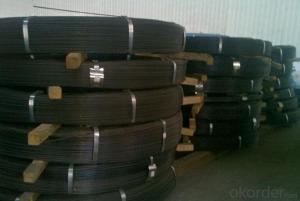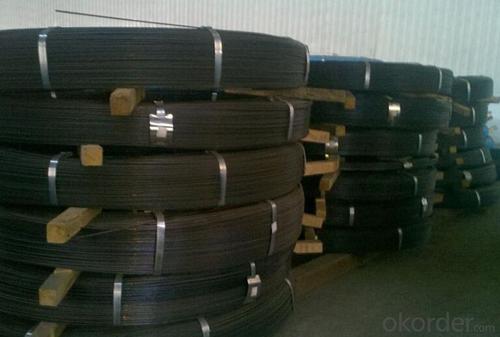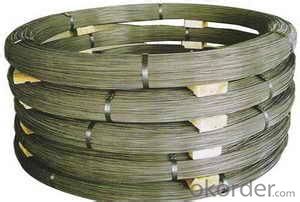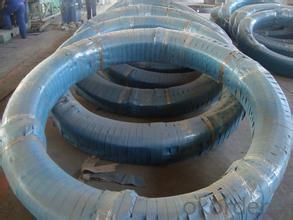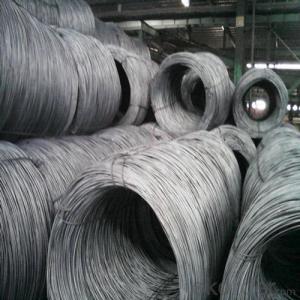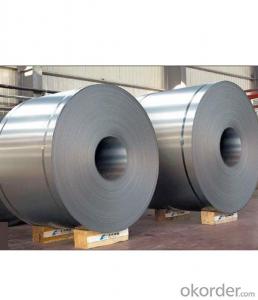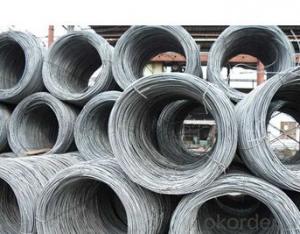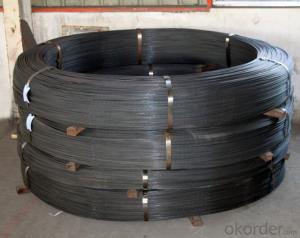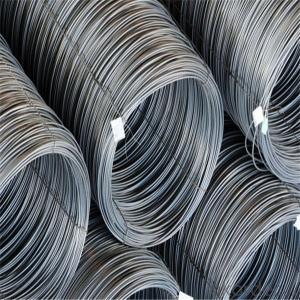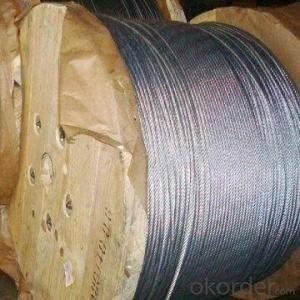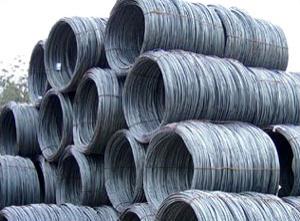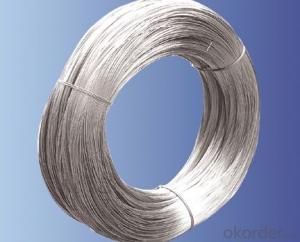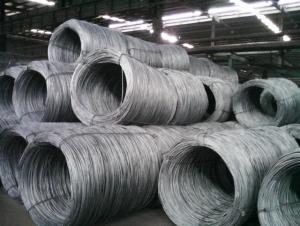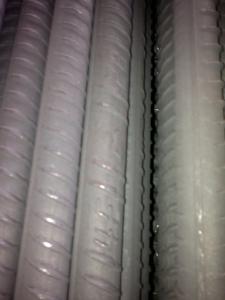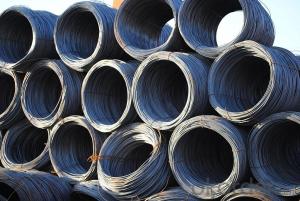Alloy Strand Steel Wire
- Loading Port:
- China Main Port
- Payment Terms:
- TT or LC
- Min Order Qty:
- -
- Supply Capability:
- -
OKorder Service Pledge
OKorder Financial Service
You Might Also Like
Quick Details
| Steel Grade: | SWRH77B, SWRH82B | Standard: | ASTM,BS,GB,JIS | Wire Gauge: | 4.0mm-10.0mm |
| Place of Origin: | Tianjin China (Mainland) | Type: | Drawn Wire,Spiral/Helical Ribs, Round Plain | Application: | Construction |
| Alloy Or Not: | Is Alloy | Special Use: | Free Cutting Steel | Model Number: | 4.0-10.0mm |
| Product Name: | prestressed steel wire 4mm high carbon steel wire | Size: | 4.0-10.0mm | ||
| Strength: | 1570/1670/1770/1860 N/mm2 | Relaxation: | Less than 2% (1000hour) | Elongation: | Not less than 4% |
| MOQ: | 10 Tons | Payment: | TT, LC | Delivery: | 10-15 work days |
| Package: | As your requirements |
Packaging & Delivery
| Packaging Detail:steel strand coil to be packed in damp proof materials strapped with 8 bands on one wooded pallet with an outer layer of plastic used for anti-rainshower 2 or 3 wooden block undermeath each coil. | |
| Delivery Detail:within 2 weeks |
Specifications
high carbon class A steel wire
Constructon:7 steel wire
material:wire 82B
FAQ of Alloy Strand Steel Wire:
①How is the quality of your products?
Our products are manufactured strictly according to national and internaional standard, and we take a test on every pipe before delivered out. Guaranteed: If products’ quality don’t accord to discription as we give or the promise before you place order, we promise 100% refund.
②How about price?
Yes, we are factory and be able to give you lowest price below market one, and we have a policy that “ for saving time and absolutely honest business attitude, we quote as lowest as possible for any customer, and discount can be given according to quantity”,if you like bargain and factory price is not low enough as you think, just don’t waste your time.Please trust the quotation we would give you, it is professional one.
③Why should you chose us?
Chose happens because of quality, then price, We can give you both.Additionally, we can also offer professional products inquiry, products knowledge train(for agents), smooth goods delivery, exellent customer solution proposals.Our service formula: good quality+good price+good service=customer’s trust
SGS test is available, customer inspection before shipping is welcome, third party inspection is no problem.
Any question, pls feel free to contact us !
Alloy Strand Steel Wire Images:
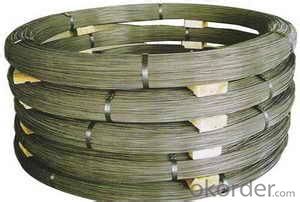
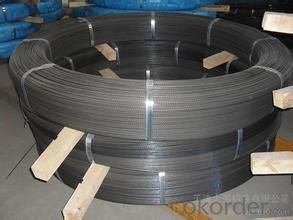
- Q: How are steel wire rods used in the production of fishing nets for catching fish?
- Steel wire rods are an essential component in the production of fishing nets for catching fish. These rods serve as the main framework or skeleton of the net, providing strength, durability, and structure to effectively trap fish. The steel wire rods are typically used to construct the upper and lower edges of the fishing net, forming a rigid border that holds the net in place and prevents it from collapsing under the weight of the catch. This ensures that the net remains open and fully spread out in the water, maximizing its catching capacity. Additionally, steel wire rods are often used to create the hoops or rings that give the net its shape. These hoops are strategically placed within the net to maintain its form, preventing it from tangling or bunching up while submerged. The stiffness of the steel wire rods allows the fishing net to retain its shape even in strong currents or turbulent waters. Moreover, steel wire rods are used to reinforce the key sections of the fishing net, such as the corners and junctions. These areas are prone to wear and tear due to the constant strain and pressure they experience while in use. By incorporating steel wire rods, the net becomes more resistant to tearing, ensuring its longevity and effectiveness in catching fish. Overall, steel wire rods play a crucial role in the production of fishing nets by providing strength, structure, and durability. They enable the net to withstand harsh environmental conditions, maintain its shape, and effectively capture fish, making them an indispensable component in the fishing industry.
- Q: What are the main factors influencing the choice of steel wire rod order warranty claims process?
- The main factors influencing the choice of steel wire rod order warranty claims process include the quality of the wire rod, the reputation and track record of the supplier, the terms and conditions of the warranty, the cost and convenience of the claims process, and the level of customer support provided by the supplier.
- Q: How does the fatigue strength of steel wire rod vary with different heat treatment processes?
- The fatigue strength of steel wire rod can vary significantly depending on the methods of heat treatment employed. Heat treatment involves subjecting the steel wire rod to specific heating and cooling processes in order to change its microstructure and mechanical properties. One commonly used heat treatment process to improve the fatigue strength of steel wire rod is quenching and tempering. This process includes heating the wire rod to a high temperature and then rapidly cooling it (quenching) to achieve a hardened microstructure. This leads to an increase in the fatigue strength of the wire rod because the hardened structure provides better resistance against fatigue failure. The subsequent tempering process involves reheating the wire rod to a lower temperature and slowly cooling it, which helps to relieve internal stresses and improve the toughness of the wire rod while maintaining an optimum balance of strength and ductility. On the other hand, if the steel wire rod undergoes a heat treatment process at a lower temperature, such as annealing, the fatigue strength may be reduced. Annealing involves heating the wire rod to a specific temperature and allowing it to cool slowly, often in a controlled atmosphere. This process is used to soften the wire rod, relieve internal stresses, and improve its machinability and formability. However, the resulting softer microstructure may cause a decrease in fatigue strength compared to quenched and tempered wire rod. In conclusion, the fatigue strength of steel wire rod can be improved through heat treatment processes like quenching and tempering, which lead to a hardened microstructure. Conversely, heat treatment processes like annealing can decrease the fatigue strength by producing a softer microstructure. Therefore, the selection of heat treatment processes is crucial in determining the fatigue strength of steel wire rod.
- Q: How is steel wire rod used in the production of fences?
- Steel wire rod is commonly used in the production of fences as it serves as the primary material for creating the wire mesh that forms the structure of the fence. The wire rod is first drawn through a series of dies to reduce its diameter and increase its length. This process results in a thin, long wire that is strong and flexible. The wire is then woven or welded together to form the mesh, which is then attached to the fence posts to create a sturdy and durable fencing system.
- Q: What are the chemical composition requirements for steel wire rod?
- The chemical composition requirements for steel wire rod generally include specific percentages of carbon, manganese, silicon, sulfur, and phosphorus. These requirements vary depending on the specific grade and intended use of the wire rod.
- Q: What are the alloying elements used in steel wire rod production?
- The alloying elements used in steel wire rod production can vary depending on the desired properties of the final product. However, some common alloying elements used in this process include carbon, manganese, silicon, and sometimes chromium, nickel, or molybdenum. Carbon is one of the most important alloying elements in steel wire rod production as it enhances the strength and hardness of the steel. The carbon content is typically kept within a specific range to achieve the desired mechanical properties. Manganese is another commonly used alloying element in steel wire rod production. It helps improve the strength and toughness of the steel and also enhances its hardenability during the heat treatment process. Silicon is often added to the steel to improve its resistance to oxidation and to enhance its electrical conductivity. It can also help control the grain size of the steel, which affects its mechanical properties. In some cases, chromium is added to steel wire rod to improve its corrosion resistance and to enhance its hardenability. Nickel is another alloying element that can be used to increase the strength and toughness of the steel, while molybdenum can improve its high-temperature strength and creep resistance. It is important to note that the specific alloying elements and their concentrations used in steel wire rod production can vary depending on the specific requirements of the final application. Steel manufacturers carefully select and adjust these alloying elements to achieve the desired mechanical, electrical, and chemical properties in the wire rod.
- Q: What are the different types of steel wire rod coatings for corrosion resistance?
- Some of the different types of steel wire rod coatings for corrosion resistance include zinc coatings, galvanized coatings, polymer coatings, and epoxy coatings. These coatings provide a protective layer on the surface of the steel wire rod, preventing it from coming into direct contact with moisture and corrosive elements that may cause rust and deterioration over time.
- Q: What are the advantages of using steel wire rod compared to other materials?
- There are numerous benefits to utilizing steel wire rod in contrast to alternative materials. To begin with, steel wire rod provides unmatched strength and durability. Steel is renowned for its high tensile strength, enabling it to withstand heavy loads and resist deformation. Consequently, it serves as an ideal material for numerous applications that necessitate sturdy and dependable support, such as in the construction, manufacturing, and transportation industries. Secondly, steel wire rod exhibits exceptional flexibility. Its elasticity allows it to bend and twist without fracturing, making it suitable for applications that involve dynamic movement or vibrations, including suspension systems, springs, and wire ropes. Furthermore, this flexibility simplifies handling and installation in diverse settings. Furthermore, steel wire rod boasts highly resistant corrosion properties. It can endure exposure to moisture, chemicals, and extreme weather conditions without rusting or deteriorating. This resistance to corrosion renders steel wire rod a long-lasting and low-maintenance choice, minimizing the requirement for frequent replacements and repairs. Moreover, steel wire rod is readily accessible and cost-effective. Steel is among the most widely used materials worldwide, ensuring its availability in various shapes, sizes, and grades. This accessibility streamlines the sourcing and procurement of steel wire rod, reducing lead times and production costs. Additionally, steel's recyclability establishes it as a sustainable and environmentally friendly option. Lastly, steel wire rod offers versatility in terms of its applications. It finds utility across a broad array of industries and settings, including construction, automotive, aerospace, agriculture, and telecommunications. Its adaptability and compatibility with diverse manufacturing processes establish it as a go-to material for numerous engineering and construction projects. In conclusion, the advantages of utilizing steel wire rod when compared to alternative materials encompass its superior strength, flexibility, corrosion resistance, availability, cost-effectiveness, and versatility. These attributes establish steel wire rod as a reliable and efficient choice for a wide range of applications.
- Q: What are the different steelmaking processes used for steel wire rod production?
- Steel wire rod production utilizes several steelmaking processes, each boasting unique advantages and applications. The primary methods encompass: 1. Electric Arc Furnace (EAF): This involves scrap steel melting via an electric arc. EAF is renowned for its ability to handle diverse raw materials and produce varying steel grades. It is an energy-efficient approach widely employed in wire rod production. 2. Basic Oxygen Furnace (BOF): The BOF process employs hot metal derived from a blast furnace and introduces oxygen to reduce impurities and regulate carbon content. BOF is acclaimed for its high production capacity and capacity to fabricate an extensive array of steel grades. 3. Continuous Casting: Following EAF or BOF refining, continuous casting solidifies the molten steel into billets, blooms, or slabs. This technique allows for uninterrupted production and is commonly applied in wire rod production. 4. Ladle Refining Furnace (LRF): LRF is frequently used in conjunction with EAF or BOF. It serves as a secondary refining process, facilitating control over steel's chemical composition and temperature. LRF guarantees enhanced quality and cleaner steel, rendering it suitable for wire rod production. 5. Microalloying: Microalloying entails incorporating minute quantities of elements like vanadium, niobium, or titanium during the refining process. This enhances the strength, toughness, and other mechanical properties of the wire rod. Ultimately, the selection of a steelmaking process for wire rod production rests on factors such as desired steel grade, production capacity, energy efficiency, and cost-effectiveness. Each process exhibits distinct advantages and is employed based on specific requirements and considerations.
- Q: How is steel wire rod used in the production of wire mesh for industrial filtration systems?
- Steel wire rod is used in the production of wire mesh for industrial filtration systems as it serves as the primary material for manufacturing the mesh. The wire rod is first drawn through a series of dies to reduce its diameter and increase its length. This process, known as wire drawing, results in a thin and continuous wire that is then woven or welded to form a mesh structure. The strength and durability of steel wire make it ideal for withstanding the high pressures and harsh operating conditions encountered in industrial filtration systems. Additionally, the uniformity and precision of the wire rod ensure the production of a consistent and reliable wire mesh product.
Send your message to us
Alloy Strand Steel Wire
- Loading Port:
- China Main Port
- Payment Terms:
- TT or LC
- Min Order Qty:
- -
- Supply Capability:
- -
OKorder Service Pledge
OKorder Financial Service
Similar products
Hot products
Hot Searches
Related keywords
